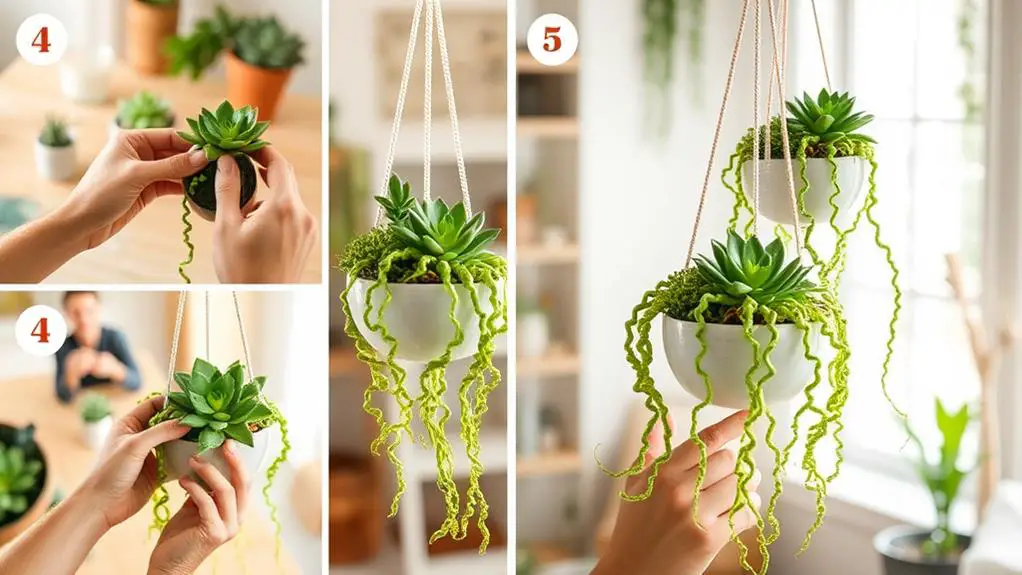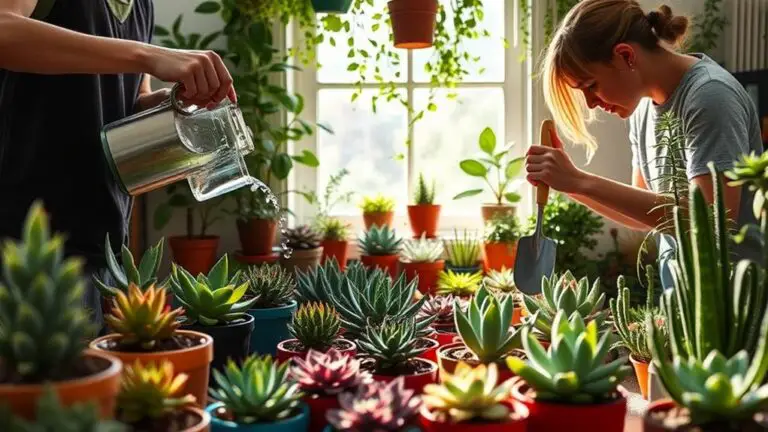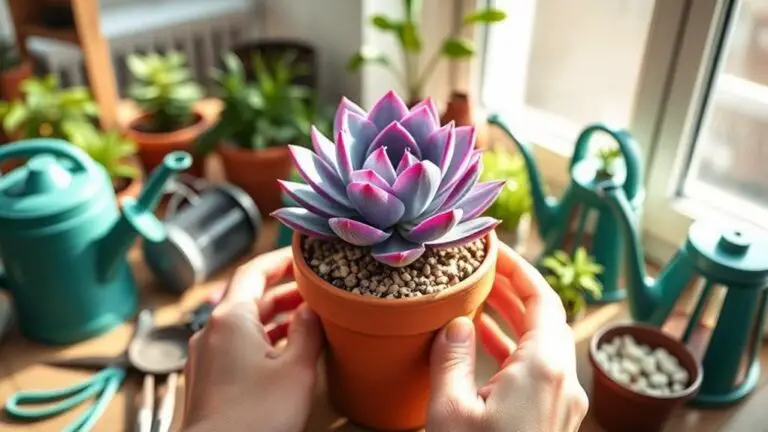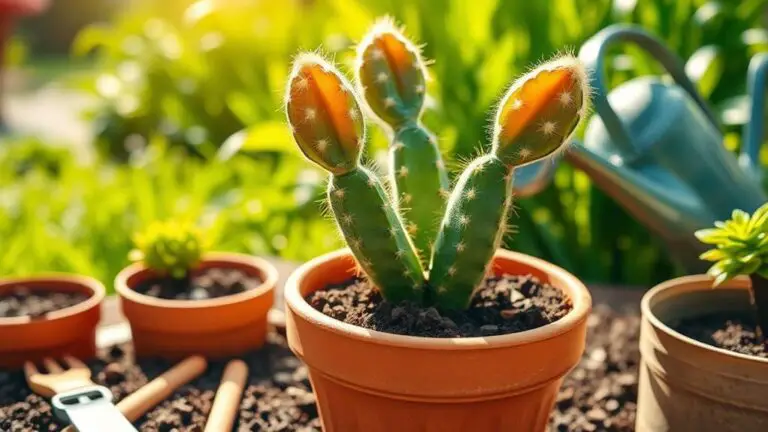How to Make Jellyfish Succulents in 5 Easy Steps
Creating jellyfish succulents is simpler than you'd think, and it starts with gathering the right materials like a rounded hanging basket and quality potting mix. You'll prepare the basket by lining it with coconut fiber and filling it with the mix. The next step involves selecting diverse succulents such as Echeveria and "string of beans" to achieve that distinctive jellyfish look. But how do you guarantee these plants stay in place and thrive? There's a specific technique and some essential maintenance tips that you won't want to miss.
Gather Your Materials
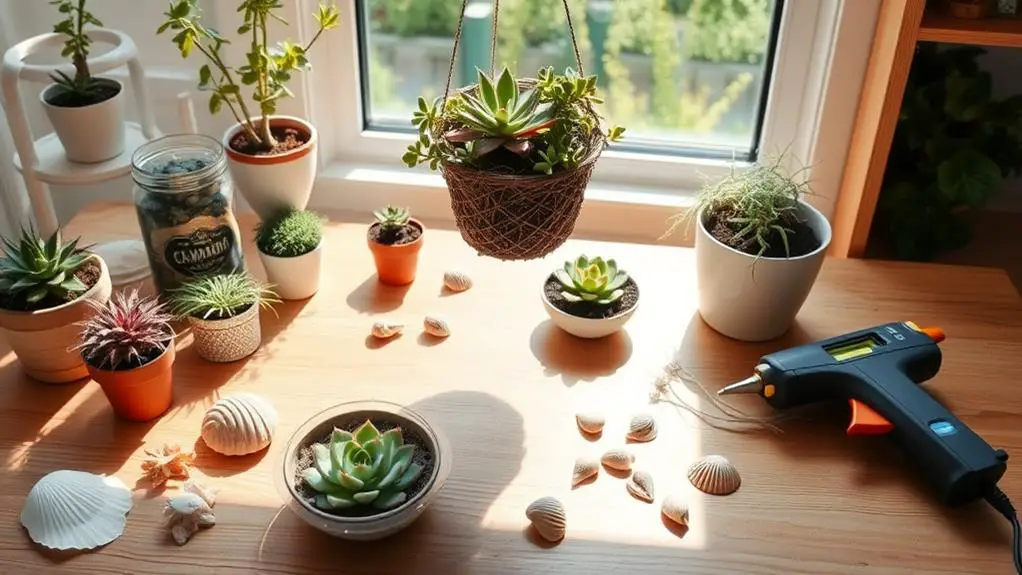
Before you begin creating your jellyfish succulents, it's vital to gather all necessary materials to guarantee a smooth and successful project.
Start with a rounded hanging basket. A moss basket is perfect for creating the desired jellyfish shape. It provides a natural and appealing look. You'll also need mesh wire cutters to secure the plants in place, ensuring they stay stable within the basket.
Next, choose at least two types of succulents. Go for varieties that offer a mix of colors and textures for visual interest. This diversity will make your jellyfish succulent more attractive and eye-catching.
Don't forget the potting mix. Opt for a high-quality one like Osmocote cacti and succulent mix. It's designed to offer ideal drainage and nutrient support, which is vital for the health of your succulents.
Lastly, gather fertilizers. Osmocote control release and pour and feed options are excellent choices. They provide the necessary nutrients to support growth and keep your plants healthy.
Prepare the Basket
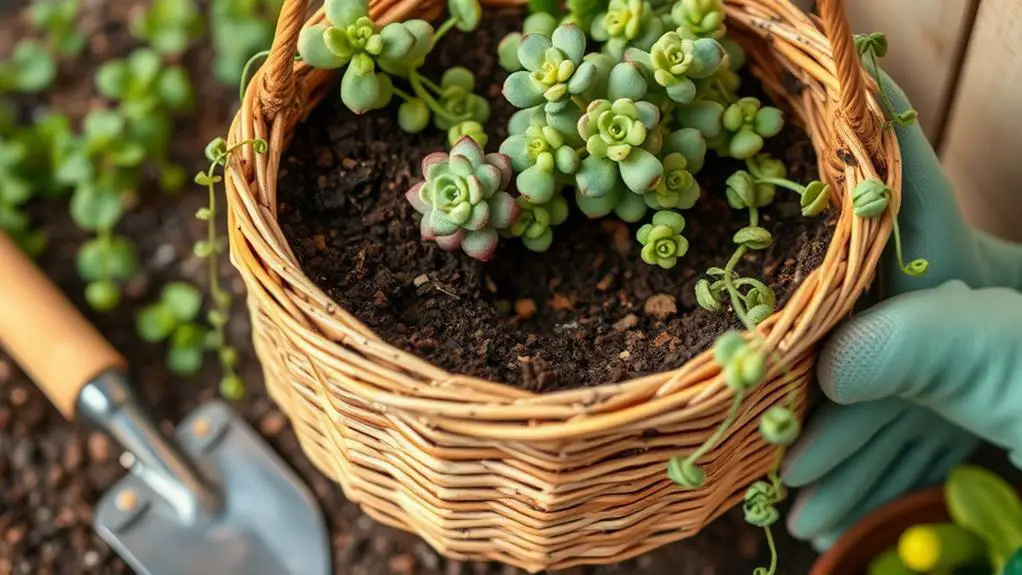
Begin by selecting a rounded hanging basket with a coconut fiber liner, which guarantees better moisture retention and aeration.
It's important to pick one with a grid pattern. This will provide stability for the plants and make sure proper drainage is achieved. A well-draining soil is crucial for the health of your succulents, so fill the basket nearly to the top with a premium quality potting mix like Osmocote cacti and succulent mix. This mix is specially formulated for best growth and moisture management.
Next, you'll need to create small holes in the coconut fiber liner. These holes will allow you to add more succulents that will cascade over the edges, creating that beautiful jellyfish effect.
Take care when making these holes to avoid damaging the liner too much. You want the liner to stay intact to support your plants.
After placing your succulents, use mesh wire cutters to secure them in place. This step prevents any displacement during growth. The mesh will hold the plants steady and ensure they grow in the right direction.
Select and Plant Succulents
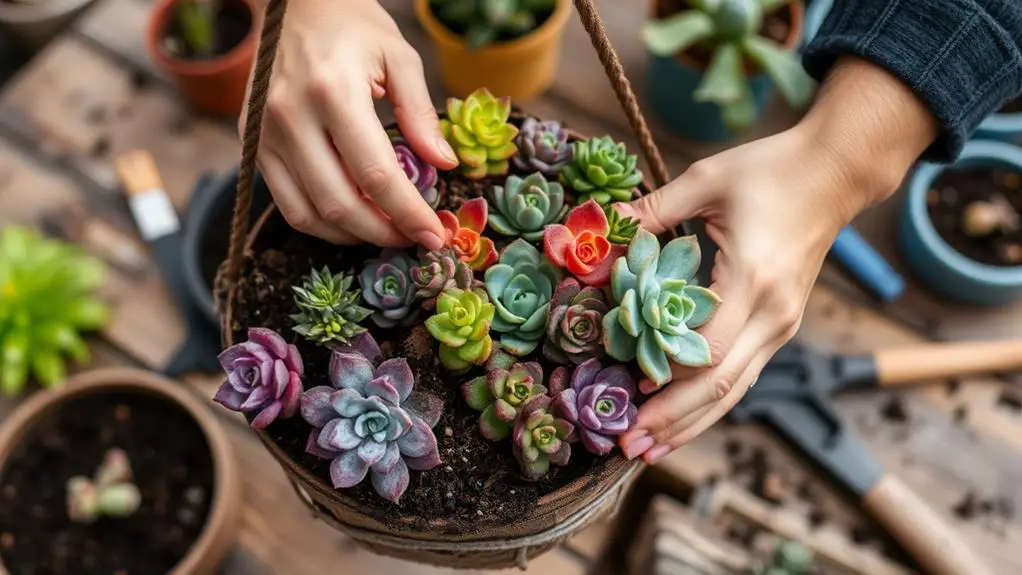
Now that your basket is prepped and ready, it's time to choose and plant your succulents. Start by selecting at least two different types of succulents. This will give your jellyfish succulent a diverse color and texture combination, making it visually appealing.
Here's what you need to do:
- Choose Your Succulents: Pick a variety of succulents, such as Echeveria for the top and "string of beans" for the hanging tentacles. The mix of shapes and colors will create a stunning effect.
- Use the Right Potting Mix: Fill your basket with a premium quality potting mix like Osmocote cacti and succulent mix. This guarantees ideal drainage and helps your plants absorb nutrients effectively.
- Plant Strategically: Carefully plant your succulents. For the cascading effect, place "string of beans" near the rim of the hanging basket. Create small holes in the coconut fiber liner to add more succulents, filling out your design.
After planting, secure the plants by adding mesh wire over the basket. This step prevents any displacement as your succulents grow, keeping your design intact.
Apply Fertilizer
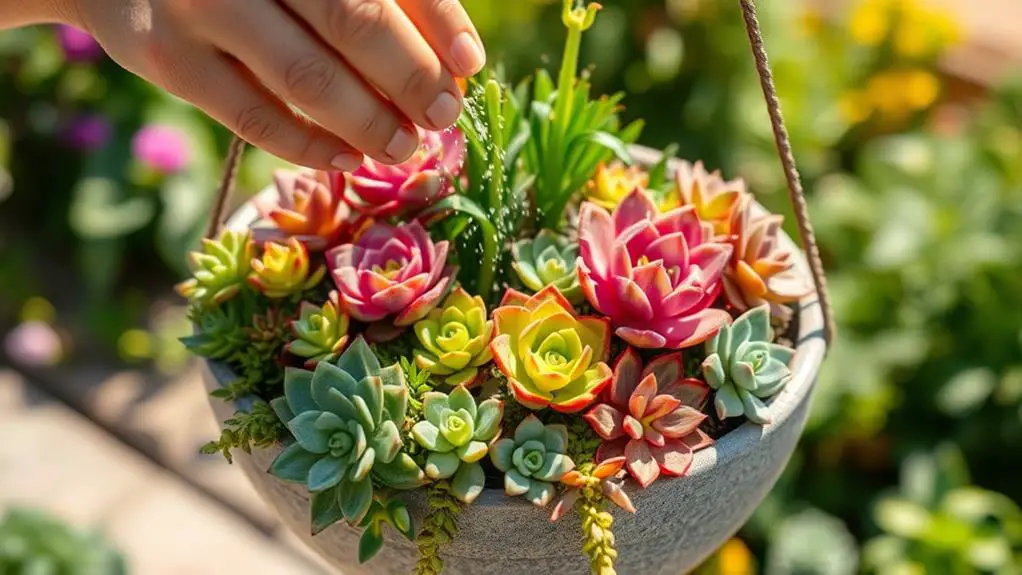
Consistently applying the right fertilizer is essential to keep your jellyfish succulents thriving. You need to know that using Osmocote cacti and succulent control release fertilizer is a great starting point. This type of fertilizer slowly feeds your plants for up to six months, guaranteeing they get a steady stream of nutrients.
To apply the fertilizer, first, lay down a layer of coconut fiber on top of the soil. This helps prevent soil loss and maintains moisture levels, creating a better environment for your succulents.
Next, for instant nutrient absorption, you can use Osmocote pour and feed fertilizer. Pour it on the top plants, making sure to soak both the soil and the foliage. This gives your succulents a quick nutrient boost.
As your jellyfish succulents grow, you'll need to monitor their progress and reapply fertilizers based on their specific needs. Different succulent varieties may require different feeding schedules, so adjust the frequency accordingly.
Always keep a close eye on your plants to see if they need additional fertilization for peak health. By following these steps, you'll guarantee your jellyfish succulents remain vibrant and healthy.
Maintain and Prune

Maintenance and pruning are essential for keeping your jellyfish succulents in peak condition. Regular care helps your plants stay vibrant and healthy. Here are some simple steps to guarantee your jellyfish succulents thrive:
1. Check Moisture Levels: Always monitor the soil's moisture. Succulents don't like being overwatered, so make sure the soil is dry before watering again.
Too much water can lead to root rot, which is detrimental to your plants.
2. Prune Overgrowth: Trim back excessively long trailing vines and remove any dead or yellowing leaves.
This helps maintain the desired shape and keeps your succulents looking neat. Regular pruning also prevents pests and diseases from spreading.
3. Monitor Growth: Keep an eye on how fast your succulents are growing.
Some varieties might need more space as they grow quicker than others. Adjust their care as needed, and consider re-potting or rejuvenating the soil every couple of years. Fresh soil provides new nutrients and supports healthy growth.
Frequently Asked Questions
How to Make Jellyfish Succulents?
To make jellyfish succulents, start with a rounded hanging basket filled with well-draining soil. Plant cascading succulents near the rim, secure them with mesh wire, and add coconut fiber to prevent soil loss. Balance top and bottom plants.
How Do You Make Homemade Succulents?
To make homemade succulents, gather cuttings from healthy plants. Let the cut ends dry for a few days, then plant them in well-draining soil. Water sparingly and place in indirect sunlight. Watch them grow!
How to Create a Succulent Bowl?
To create a succulent bowl, pick a shallow dish with drainage, fill it with cactus mix, and select diverse succulents. Plant them with space to grow, water lightly, and guarantee they get 5-6 hours of morning sunlight daily.
How Do You Make a Succulent Orb?
To make a succulent orb, start with a rounded hanging basket lined with coconut fiber, fill it with well-draining potting mix, plant multiple succulents, secure with mesh wire, and water thoroughly every 1-2 weeks.
Conclusion
You've created your very own jellyfish succulents. Keep an eye on moisture levels and trim any overgrown plants. Remember, a little care goes a long way. With regular attention, your hanging basket will thrive and amaze everyone who sees it. Don't hesitate to share your beautiful creation with friends and family. You did a fantastic job, and now you have a unique piece of living art to enjoy. Happy gardening!

